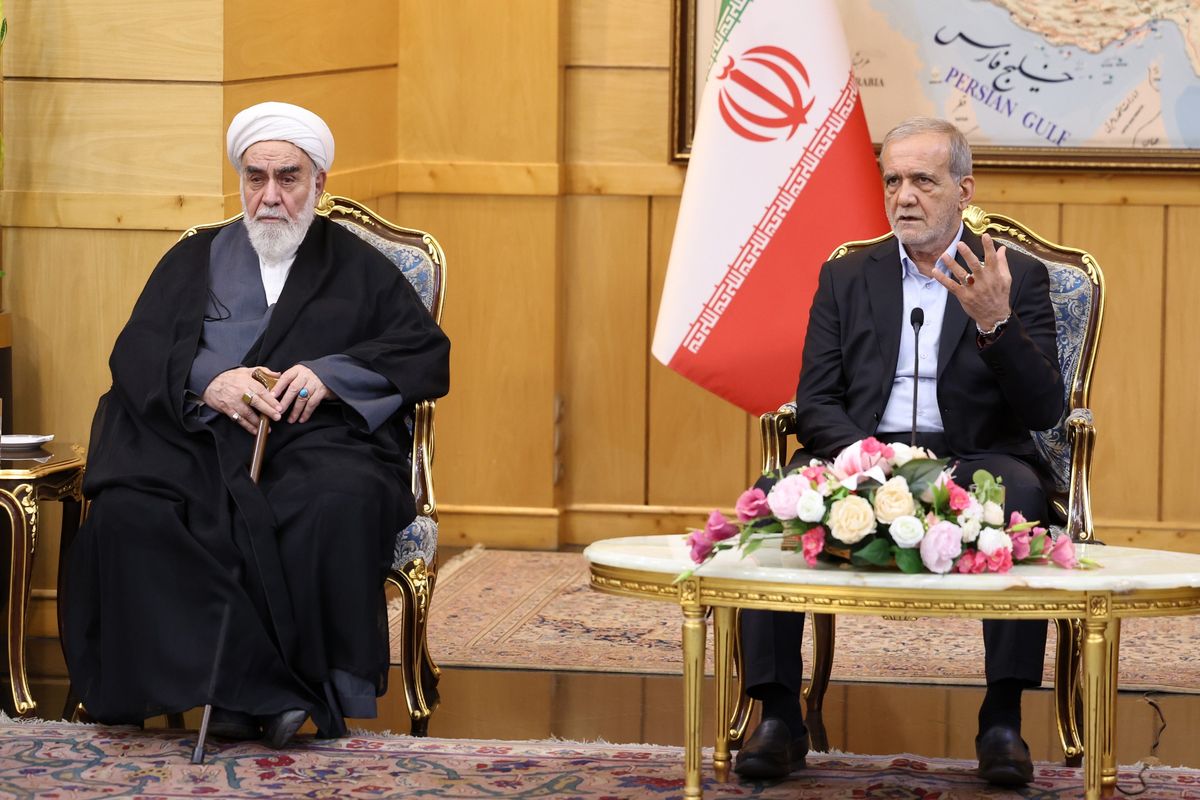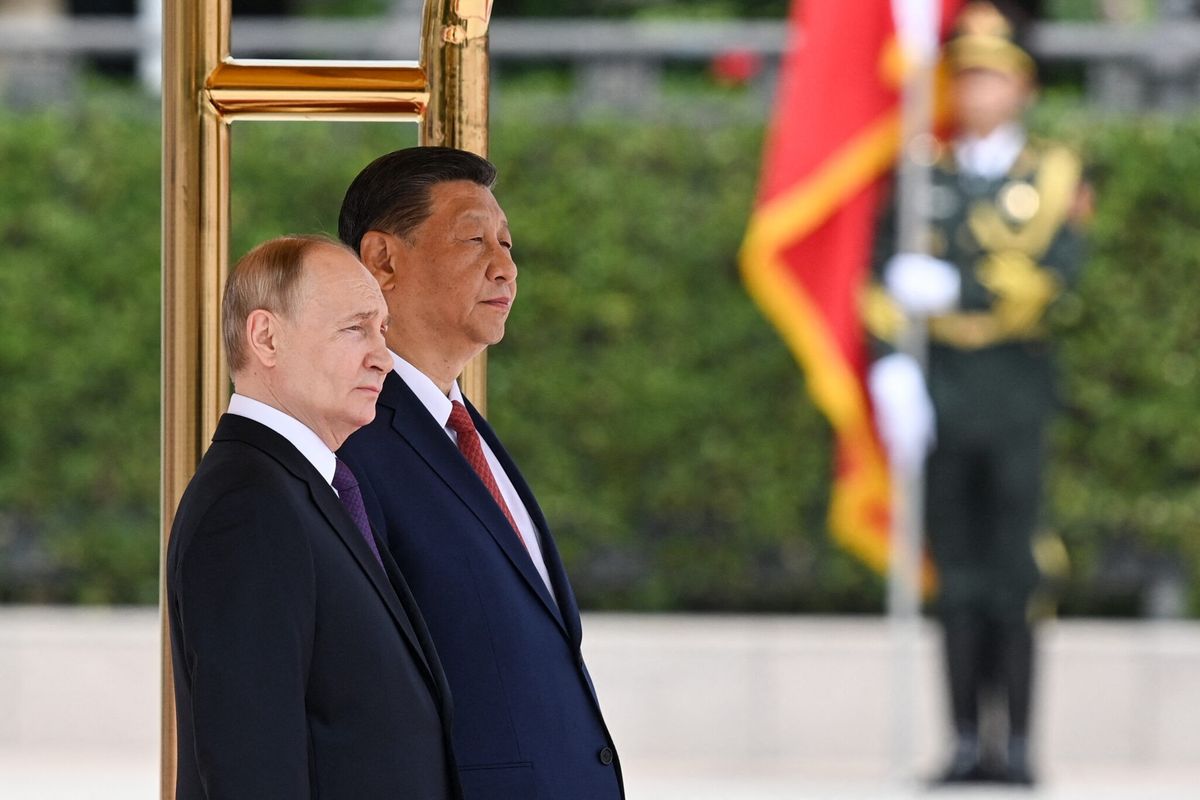For decades, North Korea’s continued advancements in ballistic missile technology has sustained U.S. interest in missile defense that can protect the U.S. homeland from nuclear-tipped intercontinental ballistic missiles. The Ground-based Midcourse Defense (GMD) system is the Pentagon’s solution for targeting and destroying long-range missiles outside of the Earth’s atmosphere. Though the GMD’s testing history is mixed, a test scheduled for late May will take place under the most realistic conditions yet and could finally demonstrate the GMD’s full potential. The Cipher Brief asked Tom Karako, the director of the Missile Defense Project at CSIS to learn more about how the GMD works, what makes it unique, and its value as a deterrent against North Korea.
The Cipher Brief: What makes GMD different than other missile defense systems?
Tom Karako: Of the four basic families of U.S. missile defense programs, the Ground-based Midcourse Defense (GMD) program is the only one devoted exclusively to long-range missile threats to the homeland. Others, like the Aegis Standard Missile, THAAD, and Patriot are tailored to defeat missiles of lesser range, and although some support homeland applications through the larger Ballistic Missile Defense System (BMDS), they are in the first instance for regional defense or force protection. GMD has a considerably larger defended area than that of any other BMD system.
That defended area is a function not just of faster interceptors, but of another uniquely distinguishing feature of GMD, namely its truly global character. Whereas regional defenses depend in the first instance upon sensors and shooters that are co-located in a battery or on the same ship, the various supporting elements of GMD are spread across 15 time zones. For the defense of the nation against long-range missiles, that sort of distributed quality is a necessity, which is exactly why the Anti-Ballistic Missile (ABM) treaty of 1972 had prohibited radars and interceptors from being spread apart. Pushing sensors forward (like the TPY-2s in Japan, facing North Korea) means tracking the threat earlier, which in turn improves defensive capability and defended area.
GMD is supported by an integrated network of multipurpose sensors, including Upgraded Early Warning Radars, TPY-2s (a radar also associated with THAAD batteries), and the Sea-based X-band radar (a radar floating on a giant oil rig). By contrast, the Aegis BMD is primarily supported by the SPY-1 radar located on the Aegis ship; THAAD has its TPY-2, and Patriots have their MPQ-53 or MPQ-65.
Despite these differences, the Ground-based Interceptor’s (GBI) kill vehicle destroys its target using only the kinetic energy of hit-to-kill, and does so outside the atmosphere. In this respect, it resembles the characteristics and mission of the Standard Missile-3, and there is some commonality between the programs.
TCB: How does GMD intercept an incoming missile?
TK: If North Korea were to launch a long-range ballistic missile, the first job for the global BMDS would be to detect it. A network of infrared satellites in space picks up the launch, and they cue both the overall command-and-control system and another network of ground- and sea-based radars. Associated ground systems classify the threat, determine its trajectory, and compute a firing solution based on where it is headed. One or more GBIs are then launched, either from Alaska or California. The GBIs are the missile-killing missiles, and they are comprised of the Exoatmospheric Kill Vehicle (EKV) atop a three-stage booster rocket. Various sea- and land-based radars continue tracking the target missile even after the GBI is launched, both providing information to GMD Fire Control, and continuing to update the EKV interceptor.
Upon burnout of the GBI’s rocket, the kill vehicle separates and opens its eyes, its onboard sensors, to locate the warhead. The EKV maneuvers itself into the path of the warhead and collides with it, destroying it with the force of impact. Finally, sensors then conduct a kill assessment to determine if the threat was destroyed or if additional interceptors are required.
TCB: Does GMD have deterrent value against North Korea?
TK: Both homeland and regional missile defenses support deterrence and the overall U.S. and allied defense posture toward threats such as North Korea.
This does not mean, however, that the presence of such defenses would alone deter or dissuade North Korea from acting in a provocative way to employ its missiles or nuclear weapons. On the contrary, the United States has for some 20 years been developing a national missile defense against North Korea on the premise that the Kim regime might not be deterred, and we had better have something in place in the event deterrence fails. The whole point of a defensive protection against the homeland is built to some degree on the idea that you cannot or may not be able to deter such a crisis from happening or such an attack from occurring.
The seeds of such instability exist, of course, quite independently of any decision to develop or deploy missile defenses. Homeland missile defense contributes to deterrence by bringing to bear a significant doubt in the mind of the adversary that an attack on the homeland would succeed. The inability to blackmail the American people supports the overall U.S. deterrence and defense posture. This in turn complicates North Korea’s effort to drive a wedge between the United States and its allies, South Korea, and Japan. All of which further enhances the credibility of offensive forces. It is the combination of all these things – the offense-defense mix – and political resolve that truly supports both deterrence and extended deterrence.
TCB: There is a GMD test scheduled for the end of this month or early June. How will this test be different? How will it seek to improve on previous tests?
TK: The GMD system is currently 9 for 17 for intercept tests stretching from the 1990s until now, but that only partly explains the state of affairs today. Some seven years ago, two back-to-back tests failed, as it turned out due to the same problem. A particular component called an inertial measuring unit had introduced a problem, and so after 2010, the Missile Defense Agency went back and took the interceptor apart, and tried to figure it out. That painstaking process paid off, however, and the next time they attempted an intercept it was successful. Following that return to intercept in the summer of 2014, the kill vehicle has had some additional improvements, as well as some flight tests that were not intended to intercept.
This upcoming test will both be against a longer-range missile, a true ICBM-class target, and it will be the first intercept test of the latest iteration of the kill vehicle, in GMD-speak known as the Capability Enhancement-II Block 1. Besides serving as a validation of the current GBI fleet, this test will also prove out some new systems intended to be incorporated into the next design turn, known as the Redesigned Kill Vehicle, which will eventually replace most of the kill vehicles deployed today.
TCB: Are other defensive systems to counter potential North Korean ICBMs either deployed or in development?
TK: Regional missile defenses for Japan, South Korea, and U.S. forces in the Asia-Pacific include Aegis, THAAD, and various Patriot deployments. For longer range ICBMs, however, GMD remains, for the time being, the only system deployed to protect the homeland. It has taken some time to put in place the architecture of the global BMDS, and in terms of homeland defense that primarily supports GMD, although in principle THAAD is now deployed to protect the territory of Guam. It is possible that today’s SM-3 Block IBs could provide area defense, provided that an Aegis ship were on station in the right place. The deployment of the forthcoming SM-3 IIA, however, will provide much greater capability and defended area, blurring the old line between homeland and regional defense.
Going forward, it is possible that certain locations, such as Guam or Hawaii, could be defended by Aegis BMD, either from a ship or from a land-based Aegis Ashore site not unlike those now being deployed in Europe to defend NATO from other ballistic missile threats from the Middle East. These or other strategic areas in the United States might benefit from an interceptor underlay, whether it be from the Standard Missile or THAAD families, or something else entirely. Such an underlay would almost certainly be an augment to GMD rather than a replacement. An additional concept under exploration is that of transportable GBIs that could be moved to boost defenses of regions in the periphery of GMD’s current defensive coverage, area such as on the East Coast, and at considerably less cost than constructing a full site.
Finally, another concept currently under development is to mount directed energy weapons on high-altitude unmanned aerial vehicles (UAVs) and fly them within striking distance of a missile’s boost phase, say in international waters off the coast of North Korea. If borne out, such platforms might be able to destroy ballistic missiles while in their boost phase before the missile leaves the atmosphere. Directed energy has advanced considerably since the shoot downs of Scud-type missiles by the Airborne Laser in 2009, but much work remains to be done before the weight-to-kilowatt ratio is sufficiently low to put atop a high-altitude UAV. This again, would bring the ability to thin the herd, but a viable midcourse defense system would probably still be required to defeat missiles that might get through. Such boost-phase capability would help bend the cost curve and contribute considerably to the concept of an effective, robust, and layered defense, both endorsed by Congress’ recent update to declaratory policy on missile defense, and as also required in the Missile Defense Agency’s own charter.










